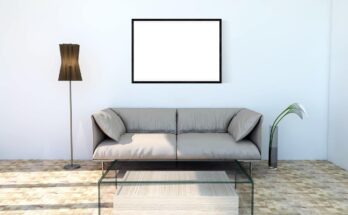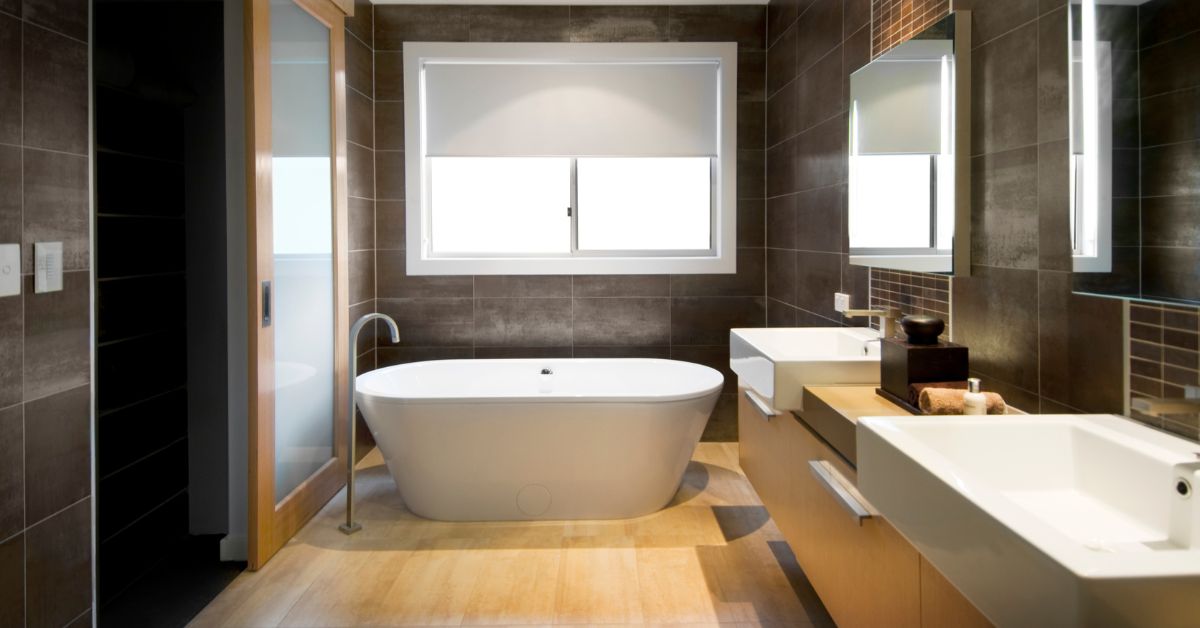Contents
- 1 Introduction to Pinoy House Design
- 2 Traditional Filipino Architecture
- 3 Critical Elements of Traditional Pinoy House Design
- 4 Modern Influences on Pinoy House Design
- 5 Combining Traditional and Modern Styles
- 6 Top Inspirations for Pinoy House Designs
- 7 Tips for Incorporating Pinoy House Design in Your Home
- 8 Conclusion
Introduction to Pinoy House Design
Welcome to the captivating world of Pinoy house design, where tradition and modernity intertwine to create stunning architectural masterpieces. From the rustic charm of traditional Filipino homes to the sleek elegance of contemporary designs, there is a beauty in Pinoy house design that truly captures the essence of Filipino culture.
Whether you’re drawn to the warmth and nostalgia of heritage-inspired elements or fascinated by innovative touches that embrace progress, this blog post will take you through the beautiful fusion of old and new in Pinoy architecture.
So please sit back, relax, and let your imagination soar as we explore traditional and modern inspirations for Pinoy house design. Get ready to be inspired!
Traditional Filipino Architecture
Traditional Filipino Architecture is a rich and diverse style that reflects the country’s cultural heritage and natural surroundings. It draws inspiration from indigenous materials, local craftsmanship, and ancient design principles.
One of the key features of traditional Filipino architecture is using bamboo as a primary building material. Bamboo is abundant in the Philippines and possesses remarkable strength and flexibility, making it ideal for constructing sturdy yet lightweight structures. The bahay kubo or nipa hut is a perfect example of this architectural style, with its elevated wooden stilts and thatched roof made from palm leaves.
Another characteristic of traditional Filipino architecture is the emphasis on open spaces and natural ventilation. Houses typically have large windows, wide eaves, and airy interiors to maximize airflow and minimize heat build-up. This allows residents to stay calm even in the tropical climate.
Furthermore, traditional Filipino houses often feature intricate woodwork and carvings that showcase skilled craftsmanship passed down through generations. These decorative elements add visual interest to facades, doors, windows, and ceilings.
Traditional Filipino architecture pays homage to ancestral roots by incorporating indigenous design motifs, such as tribal patterns or motifs inspired by nature, like flowers or animals, into its aesthetics.
Critical Elements of Traditional Pinoy House Design
Traditional Filipino architecture is a vibrant reflection of the country’s culture and history. From the bahay kubo to the ancestral houses found in various provinces, these structures showcase the unique beauty of Pinoy house design.
One key element of traditional Pinoy house design is its use of natural materials. Bamboo, nipa palm leaves, and wood are used to construct walls, floors, and roofing. These organic materials provide a rustic charm and help keep the interiors cool even during hot summer days.
Another essential feature is the elevated design called “bahay na bato.” This architectural style incorporates a stone or brick foundation with wooden upper floors. The ground floor serves as storage, while bedrooms are on higher levels for better ventilation.
Windows plays a vital role in traditional Pinoy house design as well. Capiz shell windows are a hallmark feature that allows soft diffused light into the interior spaces while providing privacy at the same time.
Furthermore, intricate carvings and details can be seen on door frames, posts, or balusters, which exhibit craftsmanship and artistry passed down through generations.
The use of open-plan layouts is also every day in traditional Filipino houses. Large communal areas allow for gatherings and socialization among family members and guests.
Incorporating these key elements can bring a touch of authenticity to your home’s overall aesthetic while paying homage to Philippine heritage. Whether using native materials like bamboo or incorporating capiz shell windows into your modern dwelling, embracing traditional Pinoy house design adds character and charm to any space.
Modern Influences on Pinoy House Design
Pinoy house design has evolved, incorporating modern influences that bring a fresh and contemporary touch to traditional Filipino architecture. These modern influences have helped create homes that are not only functional but also aesthetically pleasing.
One of the vital modern influences on Pinoy house design is the use of sleek and minimalist lines. Clean lines give a sense of simplicity and elegance, creating an open and spacious home feel. This minimalistic approach allows for easy movement and promotes a clutter-free environment.
Another significant influence is integrating sustainable materials and energy-efficient features in house design. With growing concerns about environmental sustainability, many homeowners opt for eco-friendly elements such as solar panels, rainwater harvesting systems, and natural ventilation techniques. These green features reduce carbon footprint and help save on utility bills.
In addition to functionality, modern influences have brought about innovative designs that seamlessly blend indoor and outdoor living spaces. Open floor plans with large windows or sliding glass doors allow abundant natural light to flood the interiors while providing picturesque views of surrounding landscapes.
Furthermore, technology has played a crucial role in shaping modern Pinoy house design. Smart home automation systems enable homeowners to remotely control various aspects like lighting, security systems, and temperature settings through smartphones or voice commands.
These modern influences have transformed Pinoy house design by incorporating practicality with style while keeping cultural aesthetics intact.
Combining Traditional and Modern Styles
Choosing between traditional or modern styles is unnecessary when designing a Pinoy house. Combining the two can create a unique and visually stunning home that reflects our rich heritage and contemporary tastes.
One way to achieve this fusion is by incorporating traditional architectural elements into a modern design. For example, you could incorporate capiz shell windows or intricate wooden carvings into the facade of a sleek and minimalist structure. This juxtaposition of old and new creates an exciting contrast that will catch the eye.
Another approach is to blend traditional materials with modern finishes. You could use native bamboo for accent walls or ceilings while opting for polished concrete floors or glass railings for a more contemporary touch. Combining these natural textures with sleek surfaces adds depth and character to your space.
Feel free to mix furniture styles as well. Pairing classic Filipino pieces like intricately carved wooden chairs with sleek leather sofas can create an eclectic yet harmonious look. Incorporating local textiles like piña or abaca in throw pillows or upholstery adds warmth and authenticity.
Lighting fixtures provide another opportunity for blending old and new aesthetics. Choose statement lighting pieces inspired by traditional designs using modern materials like metal or glass. These fixtures serve their purpose and become focal points that showcase your appreciation for tradition and innovation.
Remember, combining traditional and modern styles allows you to personalize your home while honoring our cultural heritage. Whether it’s through architectural details, materials, furniture choices, or lighting fixtures – finding the right balance will result in a genuinely captivating Pinoy house design!
Top Inspirations for Pinoy House Designs
1. Bahay Kubo:
This iconic Filipino house design is a timeless inspiration for Pinoy homes. With its elevated stilts and thatched roof, the bahay kubo showcases the beauty of traditional Filipino architecture.
2. Balinese Villas:
Many homeowners in the Philippines draw inspiration from Balinese villas, which feature open layouts, natural materials like wood and stone, and lush gardens. Incorporating these elements into your Pinoy house design can create a serene and tropical ambiance.
3. Scandinavian Minimalism:
The clean lines, neutral colors, and functional furniture of Scandinavian design have become popular inspirations for modern Pinoy homes. This style promotes simplicity while still creating a cozy and inviting atmosphere.
4. Japanese Zen Gardens:
Japanese-inspired gardens bring tranquility to any home’s exterior. Elements such as bamboo fences, rock pathways, and carefully curated plants can give your outdoor space peace.
5. Modern Industrial Chic:
Inspired by urban lofts and warehouses, this style combines raw materials like exposed brick with sleek finishes like glass or metal accents. It creates an edgy yet sophisticated look that suits contemporary Pinoy houses.
6. Mediterranean Charm:
Drawing from Spanish influences in Philippine history, Mediterranean-style houses often feature arched doorways, terracotta roofs, colorful tiles, and wrought iron details that charm any home.
7. Tropical Resort Living:
Inspired by luxury resorts in beach destinations across the country – think Palawan or Boracay – this style focuses on creating indoor-outdoor living spaces with ample natural light and breezy interiors using materials like bamboo or rattan furniture.
8.Javanese Joglo Houses:
These wooden structures are characterized by their pyramidal roofs adorned with intricate carvings.
Their unique architectural features make them an exciting source of inspiration for those seeking something different.
Tips for Incorporating Pinoy House Design in Your Home
A few essential tips can help you achieve the perfect blend of traditional and modern styles when incorporating Pinoy house design in your home.
Consider using natural materials such as bamboo and wood for furniture and décor. These materials add a rustic touch and reflect the sustainability often seen in traditional Filipino architecture.
Another tip is to incorporate vibrant colors into your space. Traditional Pinoy houses often feature bold red, yellow, and blue hues. You can add pops of color through accent walls or accessories like throw pillows or rugs.
Lighting is also crucial in achieving the right ambiance. Consider using warm lighting fixtures that mimic the soft glow of candlelight. This can create a cozy and inviting atmosphere reminiscent of traditional Filipino homes.
Remember outdoor spaces! In many Pinoy house designs, outdoor areas serve as an extension of the living space. Incorporate elements like a lanai or balcony where you can relax and enjoy nature.
Pay attention to details such as intricate patterns or carvings commonly found in traditional Filipino artistry. Include these elements through decorative accents or architectural features like doors or ceilings.
Conclusion
Pinoy house design truly reflects the Philippines’ rich cultural heritage and diverse architectural influences. Filipino homes encapsulate a unique blend of beauty, functionality, and versatility from traditional Bahay Kubo to modern contemporary designs.
The traditional elements found in Pinoy house design showcase the ingenuity and resourcefulness of our ancestors. Using indigenous materials such as bamboo, nipa palm leaves, and cogon grass adds aesthetic appeal and promotes sustainability.
On the other hand, modern influences have brought about exciting changes in Pinoy house design. Incorporating contemporary styles and innovative features has allowed homeowners to create visually stunning and highly functional spaces.
What makes Pinoy house design truly special is the ability to combine traditional and modern styles seamlessly. By incorporating elements from both worlds, homeowners can create houses that pay homage to their cultural roots while embracing the comforts and conveniences of contemporary living.
Plenty of sources are available if you’re looking for inspiration for your own Pinoy house design project. From architectural magazines to online platforms showcasing Filipino architecture, you’ll find a treasure trove of ideas to spark your creativity.
When incorporating Pinoy house design into your home, it’s important to consider critical elements such as materials, natural ventilation techniques, open layouts promoting airflow, and integrating local craftsmanship into your interiors.
Latest Posts!



